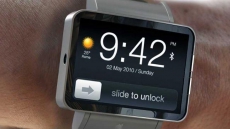Computer scientists in the US have received $50,000 on Kickstarter - a funding platform for creative projects - for a new and improved version of CodeSpells, a first-person player game they developed that teaches children how to code.
The game's previous version has been in use in dozens of schools across the world for more than a year.
The researchers have been using the game as a platform to learn about the best way to teach children how to code.
After playing CodeSpells for either four hours over four weeks or 10 hours over seven days, children aged eight to 12 were able to write code by hand in Java, researchers showed.
"It is the goal of CodeSpells to provide a rich experience of computer science education to students who may not have access to an educator," said Sarah Esper, a computer science PhD student at the University of California, San Diego.
Researchers now want to make the game more attractive and fun to play.
CodeSpells sends players on quests that help them master spells, written in Java.
This new version is more open-ended, much like Minecraft - a so-called sandbox game.
The players are wizards that can modify the world around them at will.
They can build mountains and valleys, levitate objects and start fires.
They do so by using Blockly, a web-based visual programming editor created by Google.
"As players tinker with the game, they will come up with their own exciting spells and share those. The goal is to create a vibrant online community, much like the one that has developed around Minecraft," Esper said.





